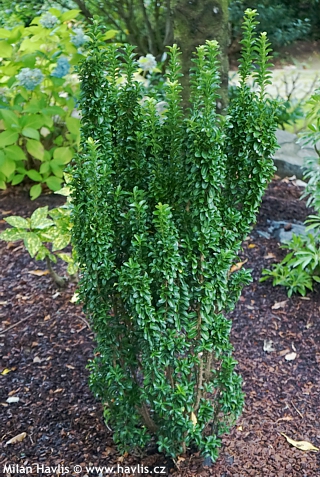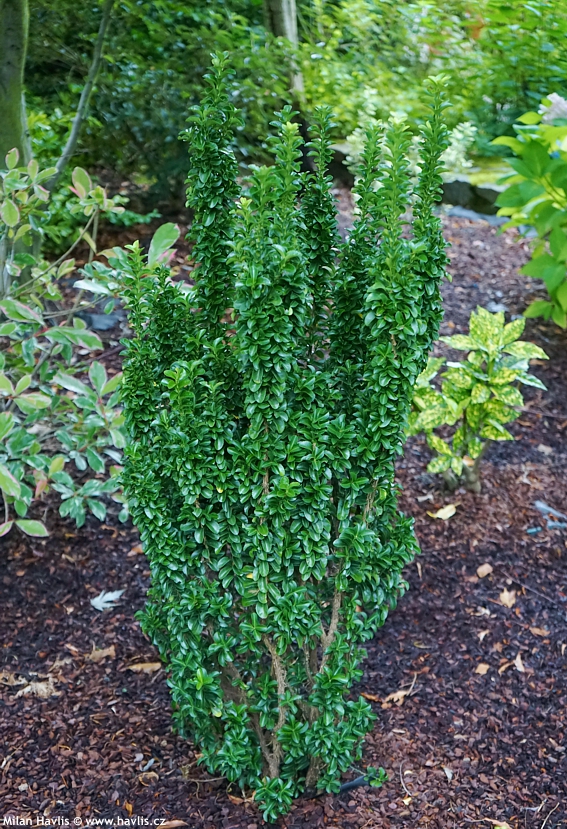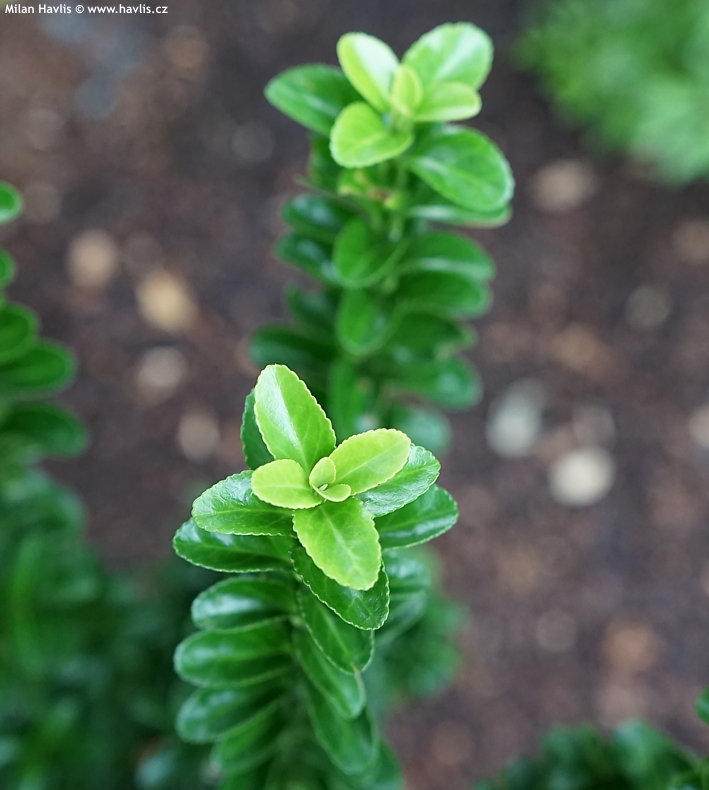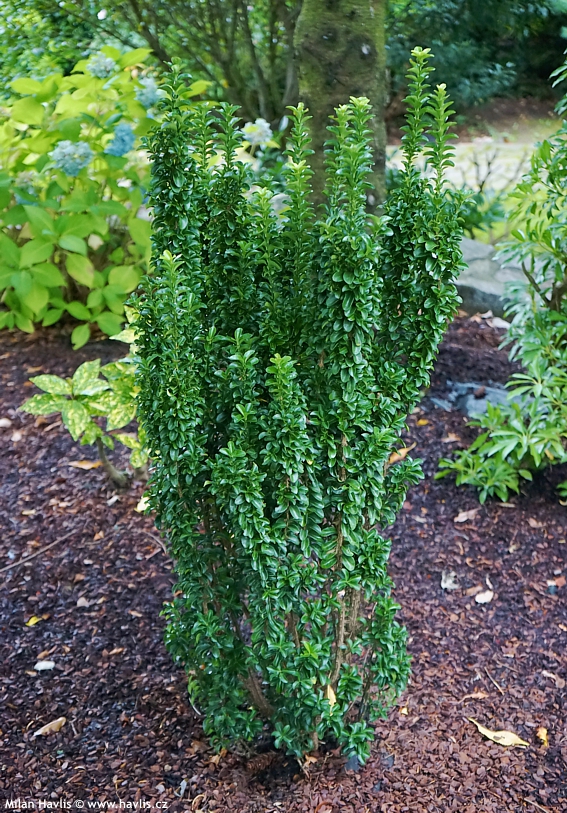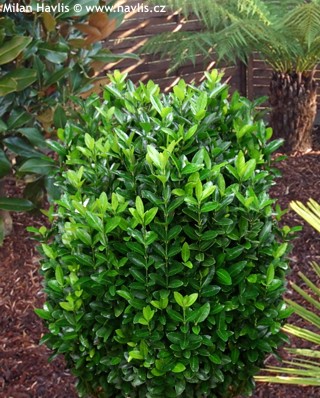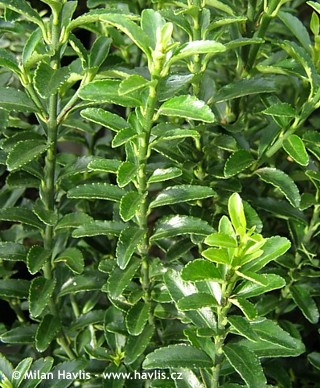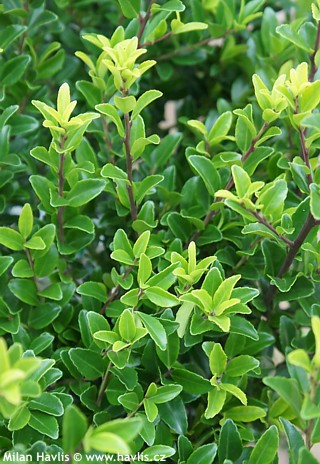Euonymus japonicus 'Benkomasaki' GREEN SPIRE (Green Rocket) Japanese spindle
Euonymus
Japanese spindles are evergreen shrubs, or small trees with grafted crowns on short stems. They are very popular in southern countries and where winters are mild. The species has oval to ovate, deep green, glossy leaves that are densely clustered along the stems while cultivars vary with shapes and foliage colour.
GREEN SPIRE is a Japanese spindle selection introduced to market around 2000. It exhibits a strictly upright habit with neatly erect branches, densely covered with 3 cm long, oval, deep green, highly glossy, evergreen leaves with gently serrated margins. One would even say that one of its parents must have been another upright growing variety with small foliage Microphyllus, same as which it is little more cold-tolerant.
In U.S. National Arboretum bulletin from November 1999 there was published an article about a new Japanese spindle variety. Its trade name was Green Spire, and it was originally discovered in Japan during a journey of three botanists John Creech, Fred Meyer, and Sylvester March in 1978. There it was allegedly called Benkomasaki which in the article was spelled as Bekomasaki. Upon return they propagated collected cuttings in the USA and in 1991 re-introduced the plant under a new name Green Spire. In 2001, the Dutch nursery Eden Plants & Creations registered the commercial name GREEN ROCKET under the patent name Benkomasaki. However, their business move apparently failed, as most growers continue to cultivate and sell this shrub under its original name, Green Spire, without the need to pay license fees.
Thanks to compact shape and slow growth GREEN SPIRE seldom requires pruning. Though you can cut it to rejuvenate old plants or to keep it shorter, but should you have ambitions for a spherical shrub choose another variety for sure. It serves a handsome evergreen gem of a vertical accent in a mixed border and is certainly a great choice for hedging.
Japanese spindles are quite soil tolerant. They will do well in almost any well-drained soil, preferably moist, but not wet. Acid soil will assure deeper shade of green leaves. Grow them on any location from full sun to deep shade. Beware of a common pest of evergreen spindles – Euonymus scale (a small, white, thread-like parasite) that attacks the undersides of leaves, branches, and trunks. It reproduces quickly and gradually drains the plant’s vitality. Eliminate it immediately at the first sign of infestation. GREEN SPIRE is about 2-3 °C hardier than the species and withstands approx. -23 °C (USDA zone 6), though we still recommend finding it a protected location in zone 6, away from cutting winds and frost pockets. Not suitable for outdoor pots.
Last update 14-11-2020; 06-05-2025

































